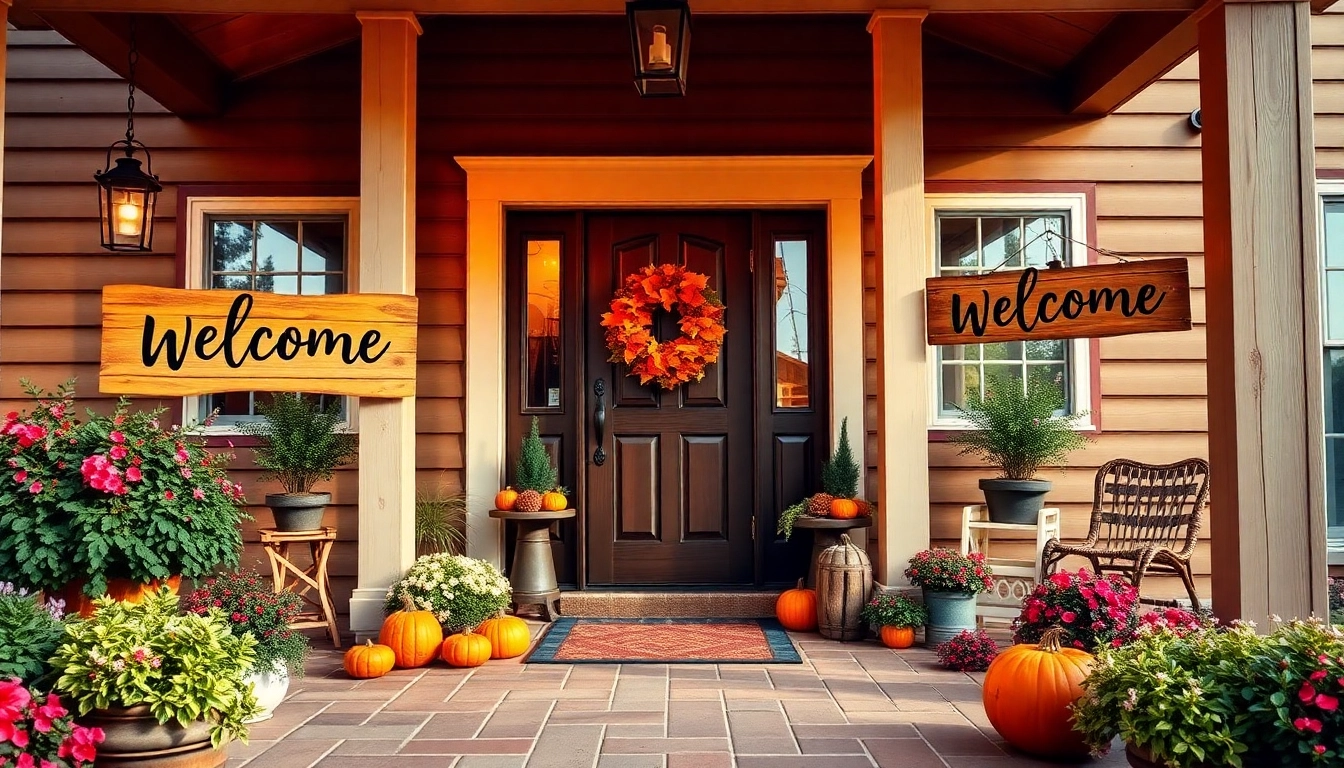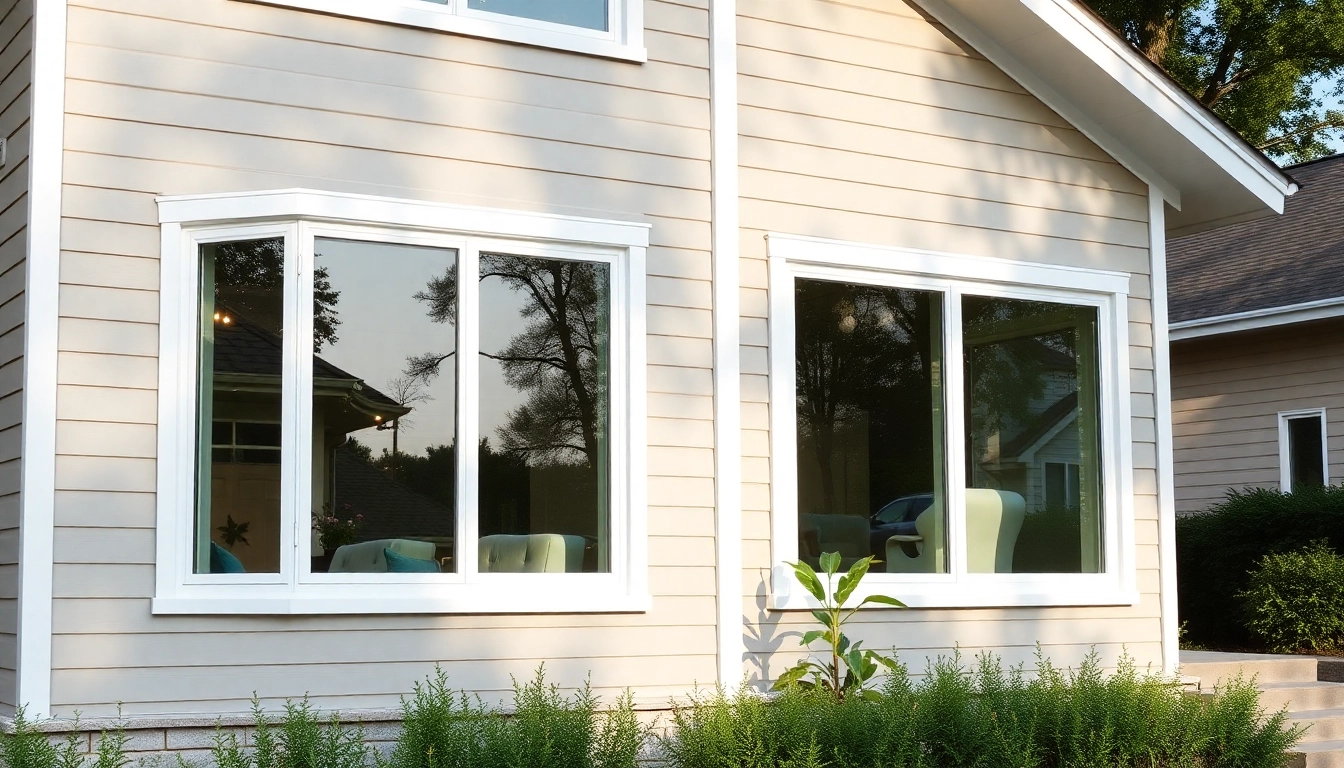Understanding the Importance of Welcome Signs in Home Decor
Welcome signs have transformed from simple decorative pieces into essential elements of modern home and front porch decor. They serve as warm invitations to guests, reflect personal style, and significantly enhance curb appeal. In today’s market, a wide array of options—from rustic wooden plaques to sleek modern metal signs—allow homeowners to express their personality and taste through customized signage. For those seeking inspiration, exploring a curated selection of welcome signs can provide a plethora of ideas to elevate any entryway.
Enhancing Curb Appeal with Welcome Signs
First impressions matter greatly, especially when it comes to a home’s exterior. A well-chosen welcome sign acts as a focal point that captures attention and creates an inviting atmosphere. According to curb appeal studies, enhancing the entrance to your property can increase its value by up to 10%, making it a worthwhile investment. Welcome signs can be strategically placed on front doors, along pathways, or on patios to give your home character and to signal hospitality and warmth. Additionally, outdoor welcome signs serve practical functions by guiding visitors or complementing seasonal outdoor decor themes.
Furthermore, outdoor signs need to withstand various weather conditions. Material quality becomes crucial here. Durable options such as cedar wood, metal, or composite materials ensure longevity, maintaining their aesthetic appeal for years. Moreover, seasonal or holiday-themed welcome signs can be rotated throughout the year, keeping the exterior festive and fresh while catering to different celebrations such as Christmas, Halloween, or summer gatherings.
Types of Welcome Signs and Their Styles
Traditional Wooden Welcome Signs
Wooden welcome signs remain the classic choice, appreciated for their rustic charm and timeless appeal. Crafted from solid wood such as cedar or pine, they can be painted or stained to match various aesthetic preferences. Many are handcrafted, adding a personal touch that resonates with farmhouse, cottage, or country-style homes. For example, locally made wooden signs from the heart of America often feature handcrafted techniques and unique finishes that enhance their rustic charm.
Metal and Aluminum Welcome Signs
Modern homeowners increasingly opt for metal signs, which offer a sleek, contemporary look. Customizable in various finishes, including polished, matte, or distressed effects, metal welcome signs are sturdy and weather-resistant, perfect for outdoor placement. Some utilize laser-cut designs for intricate detailing, making them ideal for minimalist or industrial decor styles.
Acrylic and Plastic Signs
For a lightweight and versatile option, acrylic or high-quality plastic signs are popular. These can be printed with vibrant graphics and come in numerous shapes and sizes. They are particularly suitable for renters or temporary decorations, such as seasonal or event-specific signs.
Combination and Mixed-Material Signs
Combining materials such as wood and metal can create a layered, textured look that adds sophistication and depth. For example, wooden backgrounds with metal lettering or accents can perfectly suit both rustic and modern styles with a touch of uniqueness.
How Welcome Signs Reflect Your Personal Style
Your choice of welcome sign is a visual statement of your personality and home aesthetic. For instance, a vintage-style distressed wood sign with hand-painted lettering might appeal to those with a farmhouse or shabby chic decor. On the other hand, a sleek, brushed metal sign with minimalistic fonts suits contemporary homes aiming for modern elegance.
Customization options further enable homeowners to incorporate personal touches, such as family names, house numbers, or favorite quotes. Personalized welcome signs can also reflect specific themes like beachy, woodland, or southwestern styles. Integrating your decor theme with a matching message or design elevates the overall look and emphasizes your unique sense of style.
Design Tips for Creating Attractive and Effective Welcome Signs
Choosing the Right Materials and Colors
Selecting appropriate materials is critical for durability and aesthetics. For outdoor signage, weather-resistant options like cedar, composite, or powder-coated metals are recommended. When choosing colors, consider your home’s exterior palette; neutral tones blend seamlessly, while bold colors make a statement. Light backgrounds with dark lettering or vice versa enhance visibility for passersby, especially at dusk or dawn.
Using contrasting colors ensures readability and visual prominence. For seasonal or themed signs, color schemes can be adapted to match holiday decorations or seasonal accents. Think about incorporating natural or earthy tones for rustic signs, or black and white for a modern aesthetic.
Personalization Ideas for Unique Signage
Personalized welcome signs elevate the guest experience by adding a bespoke touch. These can include family names, house numbers, or custom messages like “Welcome Home” or “The Smith Family.” Hand-painted or digitally printed options are both available, depending on your budget and desired style.
For weddings or special events, custom signs with date, monogram, or event-specific messaging create memorable first impressions. Additionally, incorporating motifs such as floral wreaths, rustic motifs, or motifs that match your yard’s landscaping can tie the sign into the overall decor theme.
Seasonal and Holiday Welcome Sign Ideas
Rotating seasonal signs can keep your home feeling fresh and festive all year round. For spring, consider floral motifs and pastel colors. In summer, beach or nautical themes work well. Fall welcomes signs with pumpkins, leaves, or harvest imagery, while winter features snowflakes, Christmas trees, or winter scenes.
Using interchangeable hardware or magnetic components allows for easy updates. For example, a sign with a reversible panel or a set of pre-made seasonal decals enables quick transformations. This flexibility not only saves money but also keeps your entryway engaging and aligned with current festivities.
Best Practices for Placement and Maintenance
Optimal Spot for Maximum Visibility
The placement of your welcome sign influences its effectiveness. The primary location is typically near the front door, gate, or along the main pathway leading to your entrance. Ensure the sign is at eye level or slightly above for maximum visibility. Avoid obstructive foliage, planters, or furniture that might hide part of the signage.
Lighting is another critical factor. Installing subtle floodlights or accent lighting can highlight your welcome sign at night, adding to curb appeal and security. If your sign includes intricate details or lettering, ensure it is easily readable from a distance.
Maintaining and Preserving Your Welcome Sign
Proper maintenance extends the lifespan of your welcome sign, preserving its visual appeal and structural integrity. Wooden signs should be regularly sealed or stained to prevent moisture damage and warping. Metal signs benefit from occasional cleaning and rust-proofing treatments if exposed to humidity or rain.
Cleaning with mild soap and water is generally sufficient for most materials. Avoid harsh chemicals that could deteriorate finishes or paint. For signs with painted or handwritten details, touch-ups might be necessary over time to retain clarity and vibrancy.
DIY vs. Professional Custom Sign Options
Deciding between a DIY project or commissioning a professional depends on your skills, budget, and timeline. DIY options can be rewarding, allowing full creative control, and using materials like reclaimed wood, paint, and stencils. However, achieving a high-quality finish may require experience with woodworking or painting.
Professional signs, on the other hand, guarantee expert craftsmanship, consistent quality, and often faster turnaround. Many online retailers and local artisans offer customization, with options for design, material, and finish. Investing in a professionally made sign can provide a polished look that enhances your curb appeal significantly.
Key Trends and Innovations in Welcome Sign Design
Rustic and Farmhouse Inspirations
Rustic and farmhouse styles continue to dominate the welcome sign market. Weathered wood, distressed finishes, and handwritten fonts evoke warmth and nostalgia. Many home decorators now incorporate vintage-inspired signs, often with reclaimed wood, for an authentic country charm.
Mocked-up chalkboard styles with interchangeable messages are gaining popularity, allowing seasonal or daily updates without replacing the entire sign.
Modern Minimalist Approaches
Conversely, sleek, minimal signs emphasize simplicity. Monochromatic color schemes, clean fonts, and geometric shapes align with contemporary aesthetics. Aluminum or acrylic materials are favored here, offering a crisp modern look that complements modern home architecture.
LED-illuminated signs are emerging within this trend, combining functionality with style and providing illumination for night visibility.
Eco-Friendly and Sustainable Materials
Eco-conscious consumers are turning towards sustainable signage options. Bamboo, recycled wood, and recycled metals are popular choices that reduce environmental impact. Some providers offer signs made from biodegradable or sustainably-sourced materials, catering to environmentally concerned homeowners.
Additionally, solar-powered lighting integrated into welcome signs offers energy efficiency and eco-friendliness, aligning with future-forward home design trends.
Measuring Success: How Welcome Signs Enhance Guest Experience and Property Value
Increased Guest Greeting and Engagement
A well-designed welcome sign makes guests feel appreciated from the moment they arrive. Personal touches and themed signage can serve as conversation starters and leave lasting impressions. For events such as weddings or parties, customized signs can set the tone and contribute to a cohesive aesthetic.
Additionally, signs that incorporate clear, friendly messages can improve visitor navigation and ease, especially for larger properties or event venues.
Boosting Home Visual Appeal and First Impressions
According to real estate experts, first impressions influence a home’s perceived value significantly. Adding a distinctive, stylish welcome sign creates visual interest, making the entryway more inviting and memorable. This can translate into increased desirability if selling the property.
Moreover, consistent design themes created through signage can harmonize with landscaping, lighting, and outdoor furniture, elevating the overall curb appeal.
Integrating Welcome Signs into Overall Home Design
Successful integration requires cohesive design planning. For instance, pairing a rustic wooden sign with vintage lanterns and flower pots enhances a farmhouse look. Modern signs on sleek metal brackets complement contemporary landscaping. The key is unity in style, color, and theme to craft a welcoming, harmonious environment.
Maintenance and regular updates keep the signs aligned with evolving decor trends and seasonal themes, sustaining their impact over time.



